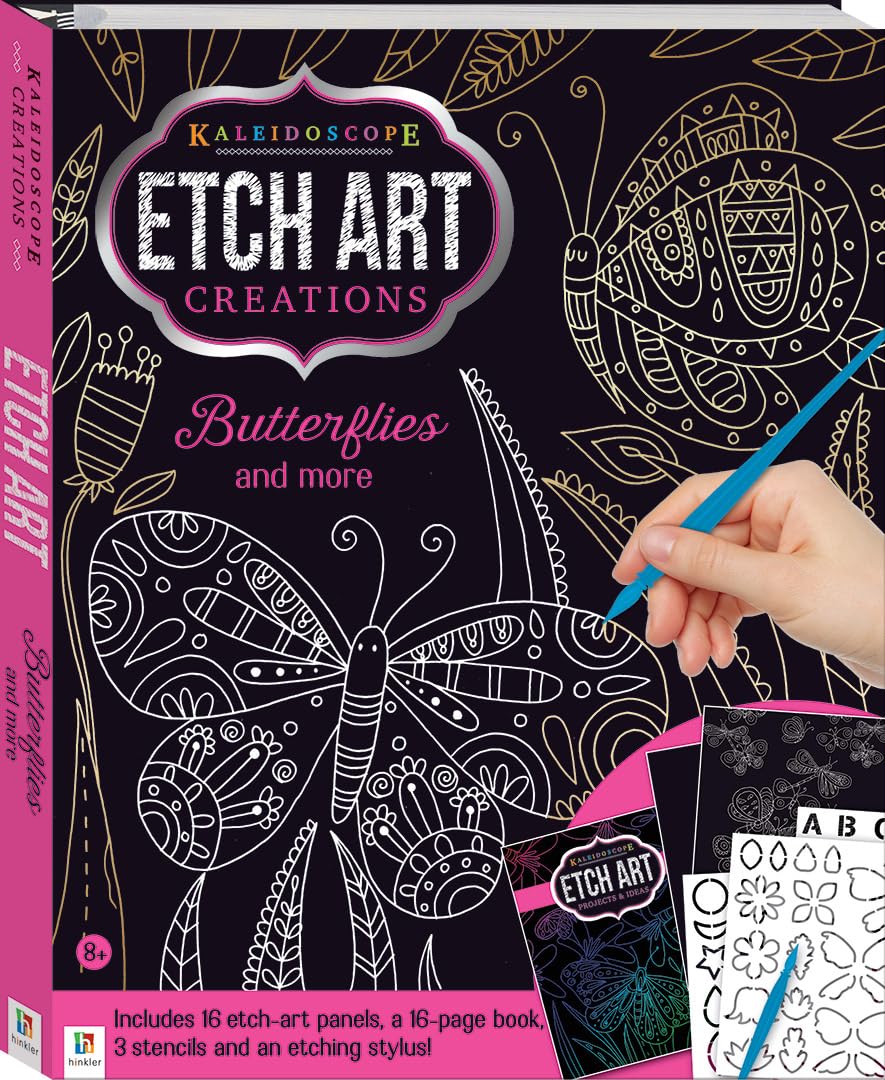
Kaleidoscope Etch Art Creations: Butterflies and More
FREE Shipping
Kaleidoscope Etch Art Creations: Butterflies and More
- Brand: Unbranded

Description
and brought them together on a platform that anyone can go on and start learning things that you've never learned or even thought about before.
The artist polishes a zinc, iron or copper plate and paints it with an acid-resistant varnish made of a mixture of wax and resin. The poet draftsman developed his own etching method and printed exquisite illustrations (Compassion 1795, Horse 1805) and text on one sheet (Frontispiece of William Haley’s Ballad Collection 1802).
Etching is traditionally the process of using strong acid or mordant to cut into the unprotected parts of a metal surface to create a design in intaglio (incised) in the metal.
He achieved unprecedented subtlety in effects of distance and light and shade by careful control of this process. With relatively soft copper, for example, the etching details will begin to wear very quickly, some copper plates show extreme wear after only ten prints.The lines were superficial, but you could get a burr—that is, a rough edge—on the lines, which would hold ink. Create a magnificent dragon poster, a beautiful unicorn photo frame, a stunning phoenix bookmark and more using the etch-art panels and etching stylus! Printing the plate is done by covering the surface with printing ink, then rubbing the ink off the surface with tarlatan cloth or newsprint, leaving ink in the roughened areas and lines. During Rembrandt’s time, there were three basic techniques that 17 th-century artists commonly used to create prints— copper engraving, drypoint, and etching.
Damp paper is placed on the plate, and both are run through a printing press; the pressure forces the paper into contact with the ink, transferring the image ( c. The elaborate decoration of armour, in Germany at least, was an art probably imported from Italy around the end of the 15th century—little earlier than the birth of etching as a printmaking technique.At the end of the process, the artist rinses off the protective coating with turpentine, rubs the black paint into the recesses on the metal and, using a printing press, transfers the image to wet paper. The innovation delighted the artists-engravers: the speed of the plate processing, accurate reproduction of hand movements, clarity and subtlety of the stroke, the 500 sheets print run without loss of image quality made the etching graphics popular for five centuries. eau forte — nitric acid, literally, “strong water”) is a technique of printed graphics, in which artists use a chemical reaction of a metal with an acid. A waxy acid-resist, known as a ground, is applied to a metal plate, most often copper or zinc but steel plate is another medium with different qualities.
The voltage should be adjustable to operate accurately within a rather narrow voltage range, such that the minimum voltage shall be at least that of the ionization potential of the metal object in the electrolyte chosen and the maximum shall not substantially exceed the sum of the decomposition voltage of the aqueous electrolyte and the over-voltage of the cathode selected. Etched carnelian beads are a type of ancient decorative beads made from carnelian with an etched design in white, which were probably manufactured by the Indus Valley civilization during the 3rd millennium BCE.
Etchings have been hugely influential in art history, particularly in the development of printmaking. Its great advantage was that, unlike engraving where the difficult technique for using the burin requires special skill in metalworking, the basic technique for creating the image on the plate in etching is relatively easy to learn for an artist trained in drawing. The acid "bites" into the metal (it undergoes a redox reaction) to a depth depending on time and acid strength, leaving behind the drawing (as carved into the wax) on the metal plate. They were made according to a technique of alkaline etching developed by the Harappans, and vast quantities of these beads were found in the archaeological sites of the Indus Valley civilization. On the other hand, the handling of the ground and acid need skill and experience, and are not without health and safety risks, as well as the risk of a ruined plate.
- Fruugo ID: 258392218-563234582
- EAN: 764486781913
-
Sold by: Fruugo
